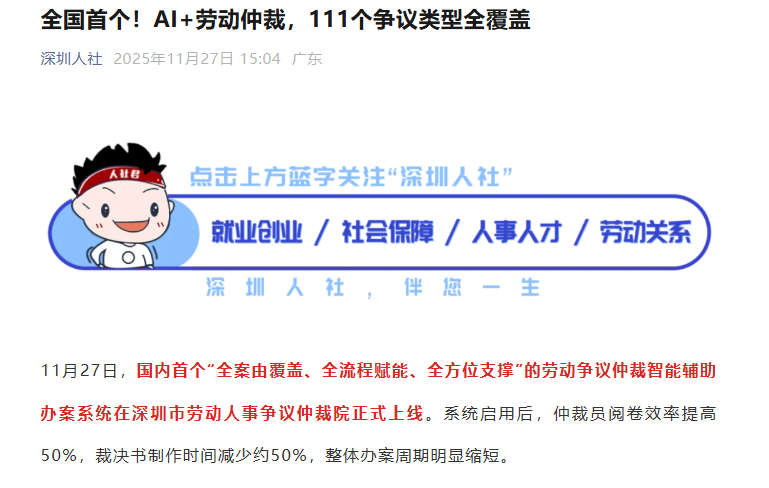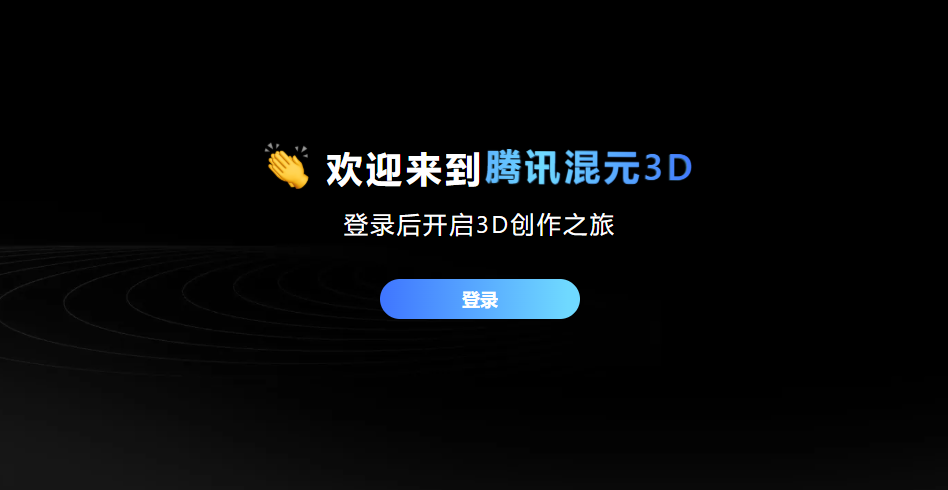Recently, the Shenzhen Labor and Personnel Dispute Arbitration Institute officially launched the country's first "Full Case Coverage, Full Process Empowerment, and Full Support" intelligent auxiliary case handling system for labor disputes. The launch of this system marks an important step for Shenzhen in combining artificial intelligence with labor arbitration, and is expected to significantly improve the efficiency and accuracy of arbitration work.

The introduction of this intelligent system has increased the efficiency of case review by 50%, and reduced the time required to prepare award documents by nearly half, significantly shortening the overall case processing cycle. A relevant official from the Shenzhen Municipal Human Resources and Social Security Bureau stated that this initiative aims to address pain points in arbitration services, enhance the quality of arbitration services, and strive to set a new benchmark for digital arbitration, which has received high recognition from the Department of Mediation and Arbitration under the Ministry of Human Resources and Social Security.
The core innovation of the system lies in its comprehensive knowledge graph covering 111 types of labor disputes, and the algorithm based on "knowledge graph as the foundation and chain of thought as the driver," integrating years of arbitration experience. This provides a solid foundation for AI application, ensuring significant improvements in aspects such as filing, mediation, case review, trial, and decision-making.
In the filing stage, the intelligent review module conducts reviews from multiple dimensions to ensure the accuracy of filing; in the mediation stage, the system analyzes the key issues of the dispute and provides relevant legal provisions and cases to assist arbitrators in making accurate mediations; during the case review phase, the system automatically organizes information, improving the efficiency of case review. During the trial phase, the system helps arbitrators generate outlines to ensure no investigation points are missed.
Additionally, the document generation function in the decision-making phase allows arbitrators to quickly draft awards and easily access related information. Most importantly, the system breaks down data barriers between arbitration and litigation in the comparison stage, enhancing the credibility of arbitration and providing support for consistent rulings in similar cases and resolving disputes thoroughly.
In the future, the Shenzhen human resources and social security department will continue to optimize the system's functions and plan to promote its use in district and city-level arbitration institutions, building a high-quality data set to support mediation and arbitration across the country.
Key Points:
✅ Shenzhen launches the country's first AI-based labor arbitration system, improving case handling efficiency by 50%.
✅ The system covers 111 types of labor disputes, achieving full-process intelligent assistance.
✅ In the future, the system will be optimized and promoted throughout the city.









